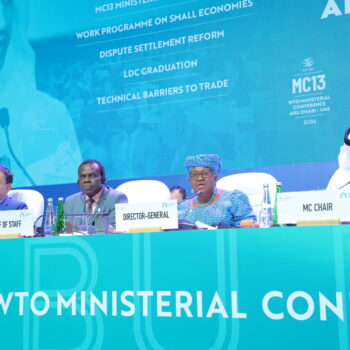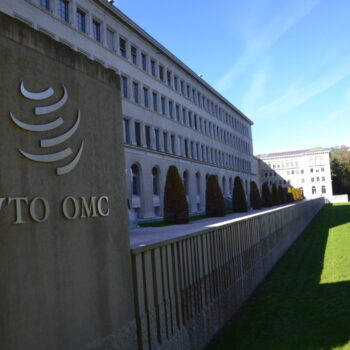Yesterday the European Commission released its new EU Industrial Strategy. The aim was to provide a credible and assertive strategy – one that would set the direction of travel for the EU economy in the context of the European Green Deal. It hasn’t quite passed that test. The Commission went big on bold language. Now we need bold policies to back up that ambition.
The strategy is a framing document linking together different policies and initiatives that the Commission plans to implement in the coming years. It is part of a larger ‘industrial package.’ It has been released alongside an SME strategy and a Single Market Enforcement Action Plan among other documents. An updated Circular Economy Action Plan will follow today.
As we read the strategy, it is worth remembering that the EU has had a new industrial policy practically every two years over the last ten years. These were largely stock-taking exercises, with vague statements about the importance of SMEs, skills and supply chains, citing a patchwork of possible policy approaches. They barely touched on climate ambition and the need to deeply decarbonise industry.
So, what’s different this time around?
There is a clear call for heavy industry to become climate-neutral. The EU has set the ambition for Europe to become the first climate-neutral continent by 2050. There is no more sidestepping the need to see deep decarbonisation across the entire EU economy, including in energy-intensive sectors. This is a significant step forward.
However, the old competitiveness narrative has crept back in. Earlier drafts of the strategy included a strong emphasis on the competitive advantage for Europe going all out for low-carbon and digital now. This has been dropped in the final strategy. Here, as in many Commission documents, climate ambition is set against the need to take competitiveness into account – as if one necessarily comes at the cost of the other.
We have some shiny new alliances. The Commission wants to replicate the success they have seen with the Battery Alliance in other areas. A European Clean Hydrogen Alliance was announced, with more alliances in the offing on low-carbon industries, industrial clouds and raw materials.
The announcement of the Clean Hydrogen Alliance shows the EU is serious about developing strategic industries for a climate neutral economy. This is welcome but if Europe is going to be a global leader in this area, there will be no room for going halfway. Public support is best allocated to solutions that can deliver a truly climate neutral product and hold most potential for new, clean industries – at the moment, this means focusing on hydrogen based on renewables instead of on fossil gas.
At the same time alliances cannot be the be-all and end-all of the EU’s industrial policy. While the Battery Alliance has delivered new projects bringing together different member states – including crucially a number of central and eastern-European countries, it also shows us the limitations of these types of bottom-up industry-led approaches. They are not up to the scale and urgency of the challenge. The battery alliance currently is not on track to meet its targets and in the time that Europe has launched two battery value chain projects, China is contemplating raising its mandatory EV quotas which could double annual sales within the next two years.
The defining problem across the strategy is the lack of detail on concrete polices. The strategy recycles a raft of existing policies. There is no direction on the mandate or scope of the alliances. The section on trade could have been copy-pasted from the 2017 industrial strategy and the Commission is delaying taking a specific stance on the most controversial elements of its industrial policy: border carbon adjustments and competition policy.
Some commentators are pointing out this time around the major difference is political will. The politics have changed. Germany and France have called for a revision of the EU’s competition rules to support the emergence of European “champions.” The European Green Deal has reset the conversation on industrial policy. And this may yet bear out but in the absence of that certainty, the strategy feels incomplete.
Where is the rest of the strategy? And when can we see it?
The Commission is sending the right signals on urgency and the direction of travel – but to live up to that it will need to move quickly to provide details on the policy package to follow. We recently published a briefing with ideas for what this policy package might look like.
One key element will be the ‘Industrial Forum’ cited in the strategy. The forum will be made up of industry, SMEs, big companies, social partners, researchers, member states and EU institutions and is due to be set up by September 2020. The Commission will need to provide clarity on the scope, mandate and membership of this forum. Will civil society by included in this forum? Where and over what time frame can we expect policies and legislative proposals to emerge?


